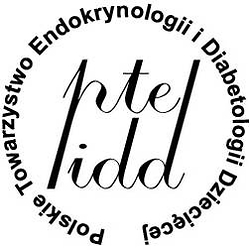1. Arima H, Azuma Y. Central diabetes insipidus. Nagoya J Med Sci 2016; 78: 349–358. doi: 10.18999/nagjms.78.4.349.
2.
Patti G, Napoli F, Fava D, et al. Approach to the Pediatric Patient: Central Diabetes Insipidus. J Clin Endocrinol Metab 2022; 107: 1407–1416. doi: 10.1210/clinem/dgab930.
3.
Angelousi A, Alexandraki KI, Mytareli C, et al. New developments and concepts in the diagnosis and management of diabetes insipidus (AVP-deficiency and resistance). J Neuroendocrinol 2023; 35: e13233. doi: 10.1111/jne.13233.
4.
Korkmaz HA, Kapoor RR, Kalitsi J, et al. Central Diabetes Insipidus in Children and Adolescents: Twenty-Six Year Experience from a Single Centre. Int J Endocrinol 2022; 2022: 9397130. doi: 10.1155/2022/9397130.
5.
Driano J, Lteif A. Vasopressin-Dependent Disorders: What Is New in Children? Pediatrics 2021; 147: e2020022848. doi: 10.1542/peds.2020-022848.
6.
Weiner A, Vuguin P. Diabetes Insipidus. Pediatr Rev 2020; 41: 96–99. doi: 10.1542/pir.2018-0337.
7.
Cerbone M, Visser J. Management of children and young people with idiopathic pituitary stalk thickening, central diabetes insipidus, or both: a national clinical practice consensus guideline. Lancet Child Adolesc Health 2021; 5: 662–676. doi: 10.1016/S2352-4642(21)00088-2.
8.
Moszczyńska E, Baszyńska-Wilk M. Pituitary stalk thickening in patients under 18 years of age – the most common causes and diagnostic procedures. Pediatr Endocrinol Diabetes Metab 2022; 28: 213–227. doi: 10.5114/pedm.2022.115202.
9.
Ji X, Wang Z. Characteristics of Pediatric Patients With Sellar and Suprasellar Lesions Who Initially Present With Central Diabetes Insipidus: A Retrospective Study of 55 Cases From a Large Pituitary Center in China. Front Endocrinol (Lausanne) 2020; 11: 76. doi: 10.3389/fendo.2020.00076.
10.
Winzeler B, Cesana-Nigro N. Arginine-stimulated copeptin measurements in the differential diagnosis of diabetes insipidus: a prospective diagnostic study. Lancet 2019; 394: 587–595. doi: 10.1016/S0140-6736(19)31255-3.
11.
Binder G, Weber K, Peter A, Schweizer R. Arginine-stimulated copeptin in children and adolescents. Clin Endocrinol (Oxf) 2023; 98: 548–553. doi: 10.1111/cen.14880.
12.
Bonnet L, Marquant E, Fromonot J, et al. Copeptin assays in children for the differential diagnosis of polyuria-polydipsia syndrome and reference levels in hospitalized children. Clin Endocrinol (Oxf) 2022; 96: 47–53. doi: 10.1111/cen.14620.
13.
Maghnie M, Genovese E, Aricò M, et al. Evolving pituitary hormone deficiency is associated with pituitary vasculopathy: dynamic MR study in children with hypopituitarism, diabetes insipidus, and Langerhans cell histiocytosis. Radiology 1994; 193: 493–499. doi: 10.1148/radiology.193.2.7972767.
14.
Adams NC, Farrell TP. Neuroimaging of central diabetes insipidus-when, how and findings. Neuroradiology 2018; 60: 995–1012. doi: 10.1007/s00234-018-2072-7.
15.
Shinoda J, Yamada H. Placental alkaline phosphatase as a tumor marker for primary intracranial germinoma. J Neurosurg 1988; 68: 710–720. doi: 10.3171/jns.1988.68.5.0710.
16.
Hattab EM, Tu PH. OCT4 immunohistochemistry is superior to placental alkaline phosphatase (PLAP) in the diagnosis of central nervous system germinoma. Am J Surg Pathol 2005; 29: 368–371. doi: 10.1097/01.pas.0000149709.19958.a7.
17.
Liu W, Hou J. Causes and Follow-Up of Central Diabetes Insipidus in Children. Int J Endocrinol 2019; 2019: 5303765. doi: 10.1155/2019/5303765.
18.
Boguszewski MCS, Boguszewski CL. Safety of growth hormone replacement in survivors of cancer and intracranial and pituitary tumours: a consensus statement. Eur J Endocrinol 2022; 186: P35–P52. doi: 10.1530/EJE-21-1186.
19.
Lewiński A, Smyczyńska J. National Program of Severe Growth Hormone Deficiency Treatment in Adults and Adolescents after Completion of Growth Promoting Therapy. Endokrynol Pol 2018; 69: 468–524. doi: 10.5603/EP.a2018.0054.
20.
Crowley RK, Sherlock M. Clinical insights into adipsic diabetes insipidus: a large case series. Clin Endocrinol (Oxf) 2007; 66: 475–482. doi: 10.1111/j.1365-2265.2007.02754.x.
21.
Miljic D, Miljic P. Adipsic diabetes insipidus and venous thromboembolism (VTE): recommendations for addressing its hypercoagulability. Hormones (Athens) 2014; 13: 420–423. doi: 10.14310/horm.2002.1496.
22.
Janus DM, Wojcik M. Adipsic diabetes insipidus in pediatric patients. Indian J Pediatr 2014; 81: 1307–1314. doi: 10.1007/s12098-014-1421-8.
23.
Pivonello R, Colao A. Impairment of bone status in patients with central diabetes insipidus. J Clin Endocrinol Metab 1998; 83: 2275–2280. doi: 10.1210/jcem.83.7.4987.
24.
Wüster C, Abs R. KIMS Study Group and the KIMS International Board. Pharmacia & Upjohn International Metabolic Database. The influence of growth hormone deficiency, growth hormone replacement therapy, and other aspects of hypopituitarism on fracture rate and bone mineral density. J Bone Miner Res 2001; 16: 398–405. doi: 10.1359/jbmr.2001.16.2.398.
25.
Simm PJ, Biggin A; APEG Bone Mineral Working Group. Consensus guidelines on the use of bisphosphonate therapy in children and adolescents. J Paediatr Child Health 2018; 54: 223–233. doi: 10.1111/jpc.13768.

 POLSKI
POLSKI







